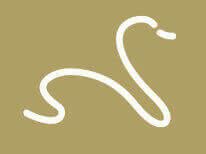Pixel Count
See the technique page about pixel count. It explains how to calculate how many pixels you need to print pictures of various sizes.
Printer
I decided on these criteria:
- Standard four-colour printers are fine for snapshots and selfies, but not for art printing. You need more colours of ink to show the hard work you have put into creating a beautiful picture.
- To print something very long, you need a printer that handles roll paper.
- You are not a print factory, so you don’t want to spend a huge amount and get a printer that occupies a whole room.
- Uses high quality archival inks.
Researching products using these criteria quickly narrows the list of candidate printers to one: an Epson SureColor P800. It satisfies all the requirements and can print images up to 10 feet (3 metres) long and 17″ high.
Archival Ink
Pictures printed in a drug store or on a regular office printer change colour in a couple of years, and are noticeably discoloured in less than 10. So you need to consider the ink that the printer uses.
The P800 uses Epson Ultrachrome ink with an expected lifetime of 150 to 200 years.
Archival Paper
In an effort to pick a standard paper for my work, I printed the same picture on 10 different types of paper and asked lots of people to rank them on a number of factors. I learned that some people like shiny and some do not – that basic factor governed all other aspects of their preferences.
When you pick the paper, consider the look you want (shiny, smooth, otherwise). But also look at the life expectancy of the paper. You have probably seen an old paper-back novel whose pages have turned brown and crumbly; this is because of acid in the paper gradually destroying the paper itself. Choose paper that won’t do this.
I chose Red River papers (their Polar Matte and Arctic Polar Luster), and ordered a bunch of it. People who have seen panoramas on Polar Matte from a 17 inch high roll have been impressed with the results.
